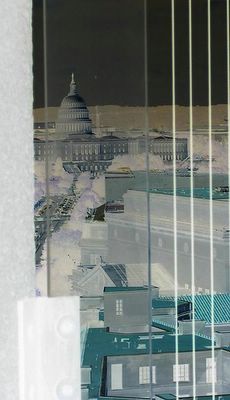RESIDUAL EFFECTS: Mustard Gas Concerns Spreading Beyond Spring Valley
The Northwest Current reports that the scope of the U.S. Army's inquiry into Upper Northwest chemical weapons testing is spreading.
From the Current's Charles Bermpohl:
"Whatever the case, adding Westmoreland Circle and Tenleytown to the Army Corps of Engineers' Areas of Interest that require investigation would push the parameters of the U.S. Army's 85-year-old chemical-weapons testing program headquartered at American University beyond the areas that have been associated with it: Spring Valley, American University Park and Fort Gaines [Ward Circle], the banks of the C&O Canal, Catholic University and the Dalecarlia Reservoir area."
For those who are unaware, the U.S. Army used the land that is now American University to test chemical weapons -- including mustard gas -- during World War I. About 10 years ago, parts of tony Spring Valley were evacuated when toxic munitions shells were found under 52nd Court. According to the Current, parts of 52nd Street, Woodway Lane and Westmoreland Circle are now in the suspect area. The area around the Tenleytown metro station is in the "early" stages of being investigated.
And this sounds comforting: "The task force recommended that a four-property area around the 5000 blocks of Upton and Van Ness Streets undergo investigation after it discovered that a "1995 [Army] Record of Decision indicates that no sampling was conducted at this location' ..." where "some very disturbing anecdotal health effects" have been recorded.
And if you've been freaked out by the lead in the water, do you want some more potential hysteria? The Army doesn't exactly know what kind of impact the WWI testing had on the Dalecarlia Reservoir, which is part of the network where we get our drinking water (though it does know "that live shells were buried there rather than fired from guns and exploded in the area"): "But the area of interest report distributed at the Restoration Advisory Board meeting last week calls the Dalecarlia an impact area." ... but "the reservoir grounds were 'simply an impact area.' ... 'But the Corps thinks this is a probable impact area.'"
Whenever the word "think" is used in the guessing where chemical weapons are buried in the capital city, that is comforting.
Speaking of Your Water Supply. The Current also has an ad on page 40 for a "Notice of Public Meeting: Proposed Water Treatment Residuals Management Process for the Washington Aqueduct, Washington D.C."
If you have any interest, head on up to the Sibley Hospital auditorium on May 26 to learn about how the Washington Aqueduct has to comply with new regulations to avoid "returning water treatment residuals to the Potomac River ... These residuals are river sediment and particulate matter that are removed from the water by using a coagulent." Coagulent, mmmm ... tasty.
"Alternatives to be evaluated in detail include processing the residuals on the property of the Dalecarlia Treatment Plant and trucking them to an offsite location, disposing them to an offsite location, disposing of the residuals in a monofill on the Dalecarlia Reservoir property [with the mustard gas shells maybe], or constructing a pipeline through which the residuals would go ..." blah blah, blah ...
Taking into consideration that my old boss contracted a rare form of cholera from the D.C. water system more than 10 years ago, I'm not sure what is better for our water drinking consumption: a "coagulent" or lead.



0 Comments:
Post a Comment
<< Home